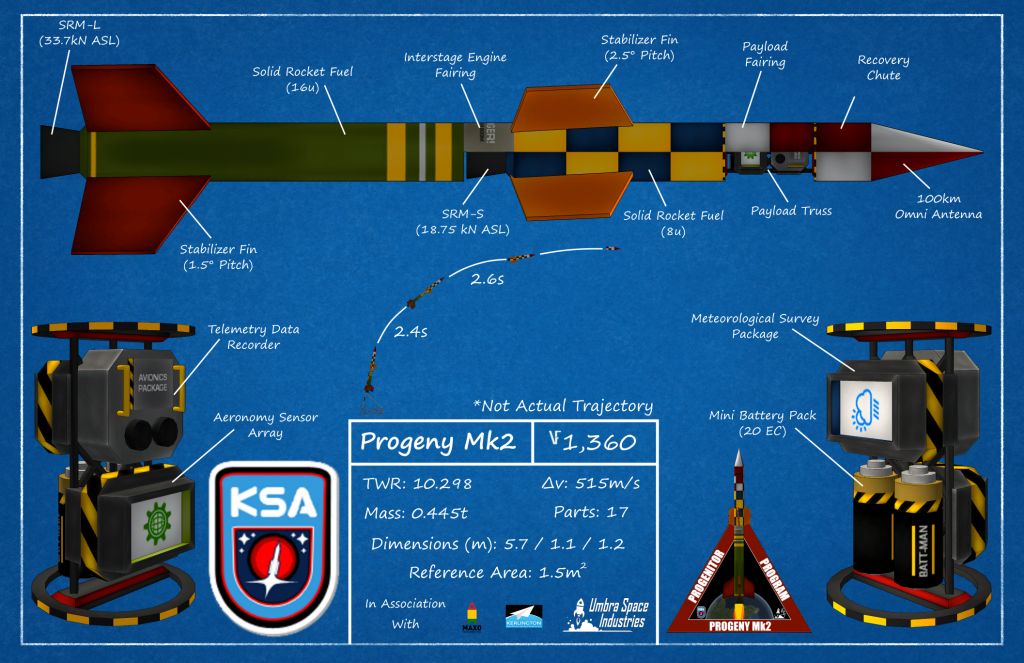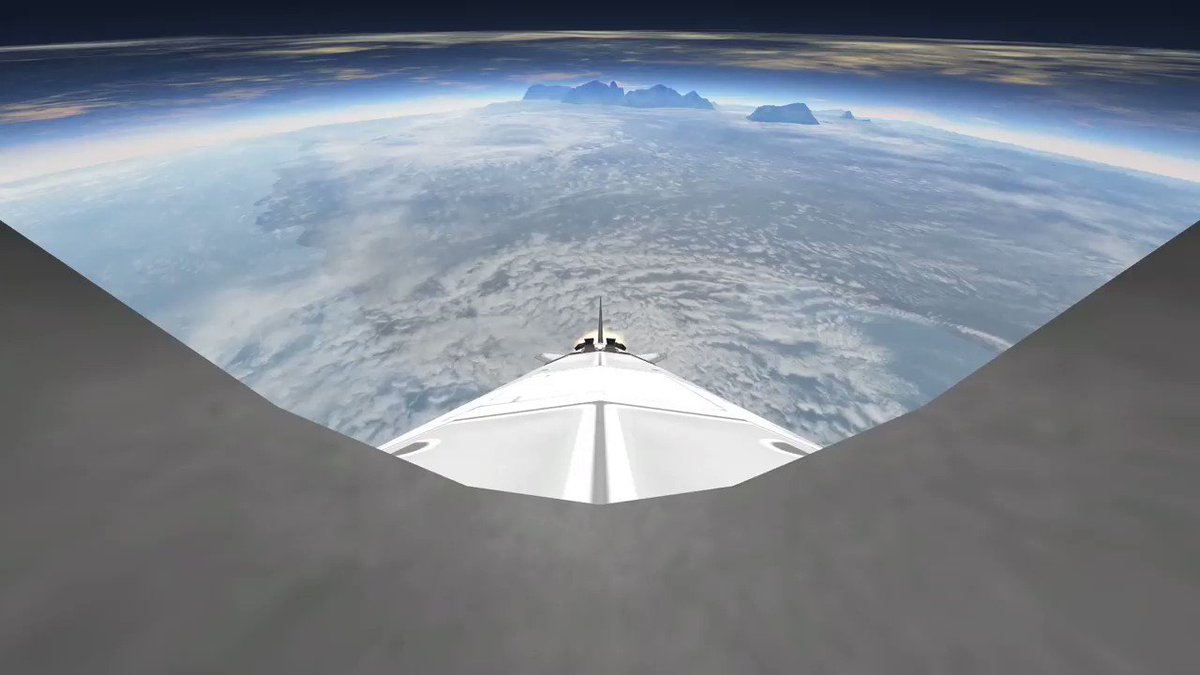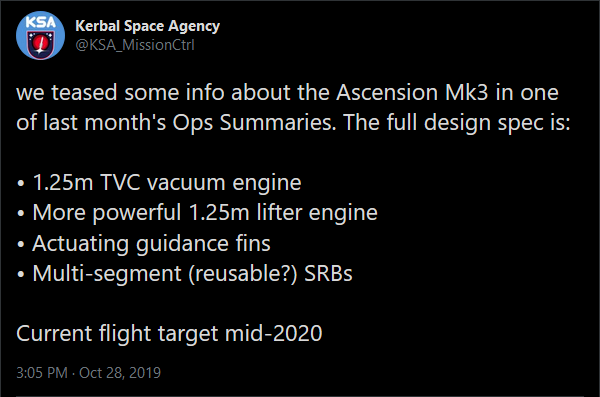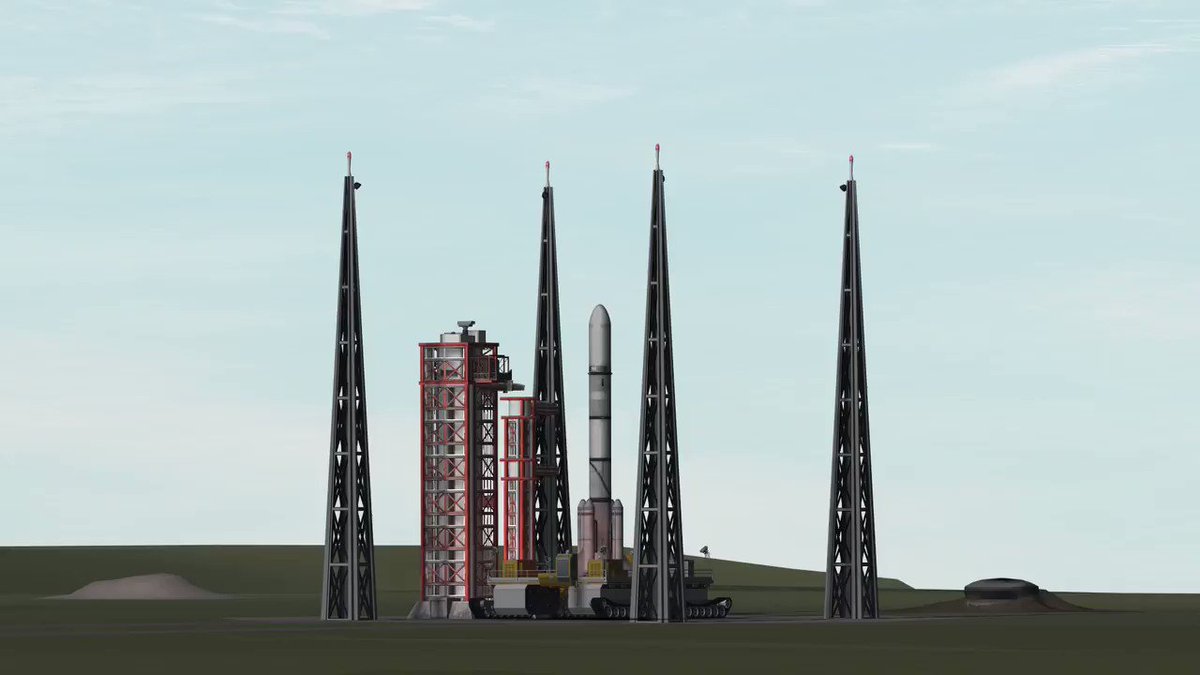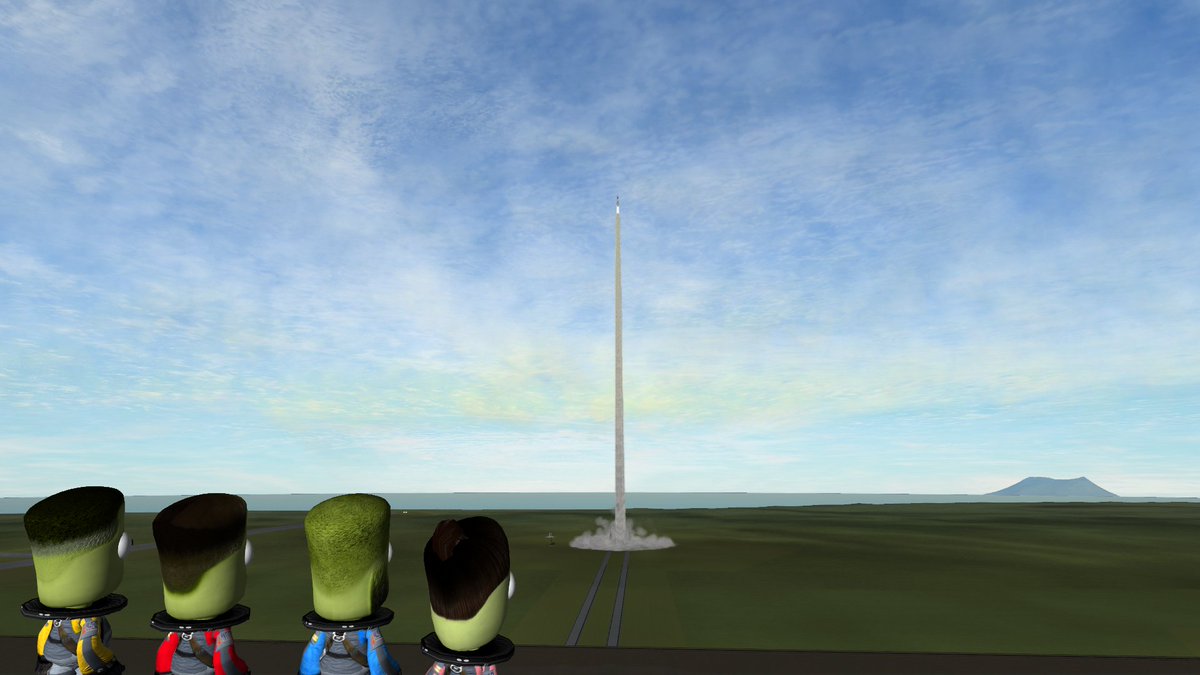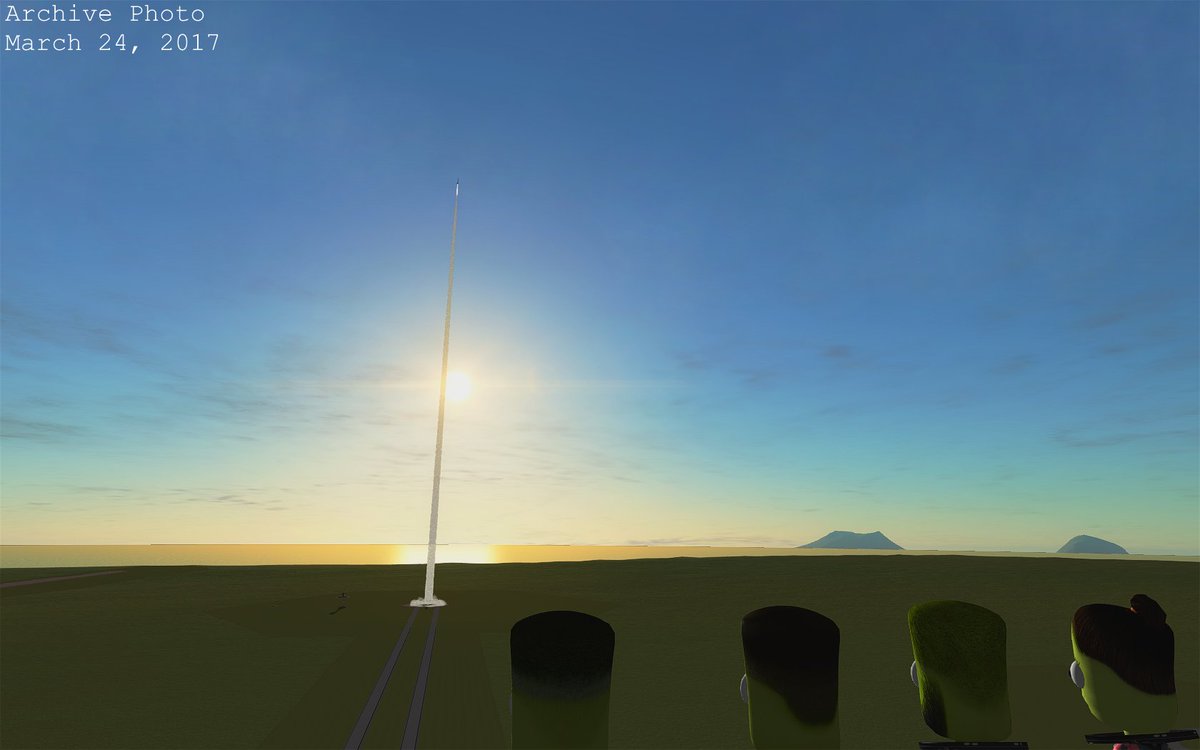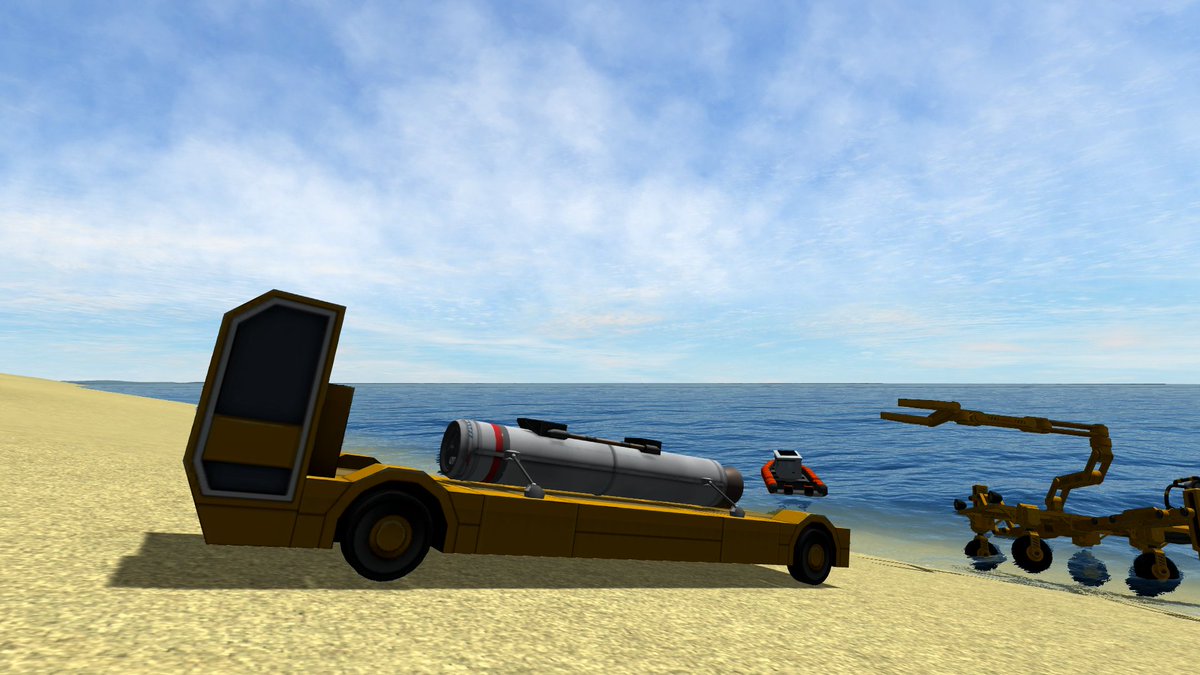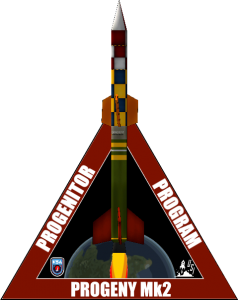 After review of the Progeny Mk1-A and review of the Progeny Mk1-B series of flights the decision has been made to move forward with the Progeny Mk2. The two boosters tested by the Mk1 flights were always meant to be combined into a two-stage rocket and this will be the goal of the Mk2 design. The rocket will begin its ascent using the Mk1-A booster, which will then detach and after a short coast period the Mk1-B booster will ignite to further propel the payload towards the mid-lower atmosphere, which extends fully up to 18km above the surface. The booster fins will both be angled to spin the rocket during ascent, although subsequent launches may attempt straight flight.
After review of the Progeny Mk1-A and review of the Progeny Mk1-B series of flights the decision has been made to move forward with the Progeny Mk2. The two boosters tested by the Mk1 flights were always meant to be combined into a two-stage rocket and this will be the goal of the Mk2 design. The rocket will begin its ascent using the Mk1-A booster, which will then detach and after a short coast period the Mk1-B booster will ignite to further propel the payload towards the mid-lower atmosphere, which extends fully up to 18km above the surface. The booster fins will both be angled to spin the rocket during ascent, although subsequent launches may attempt straight flight.
Our current parts stockpile contains 2 Mk1-B boosters and 3 Mk1-A boosters, but we’re already looking into acquiring additional units from Umbra Space Industries. Considerations are being made for possibly using the extra Mk1-A booster to attempt a dual side-by-side lower stage flight, although at this time engineers are unsure how to couple them to the upper stage. They suspect a longer 3-stage rocket would be unstable due to the low TWR of the first stage.
The Mk2 will also be the first rocket to carry a scientific payload, lofting two of the instruments that were tested last month aboard a KerBalloon flight. These packages will provide data on the atmosphere that meteorologists can use to help increase their understanding of Kerbin’s new weather patterns.
The rocket assembly process will proceed similarly to the Mk1. Two days will be spent assembling and testing the Mk1 boosters, with a final day for assembly & integration of the payload. A fourth day will be spent on integration and testing for the entire rocket. Simon and his team will begin assembly on 10/19 and the rocket will be ready to launch a week later on 10/26 @ 17:00 UTC.







